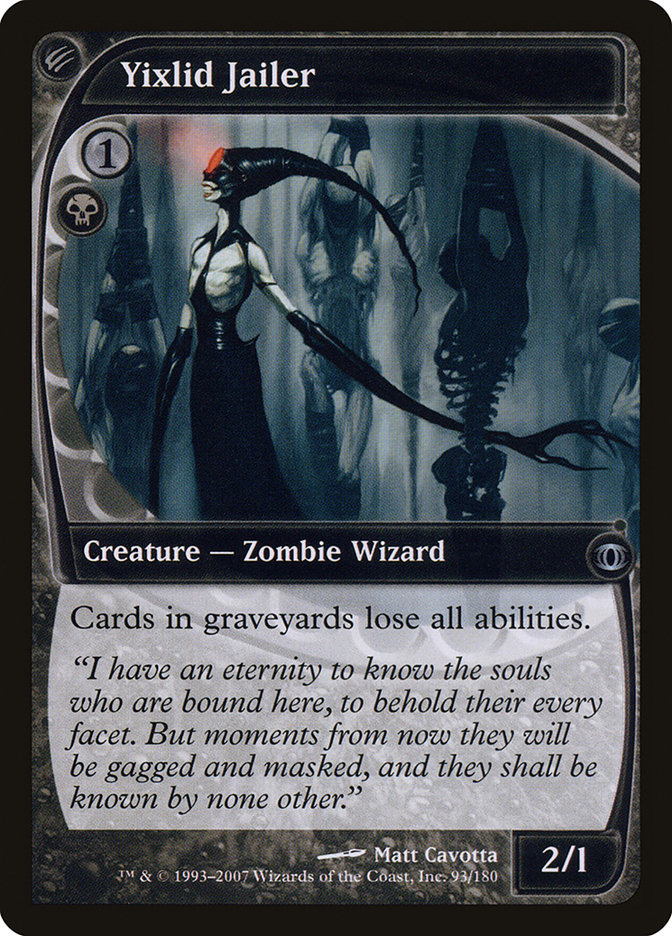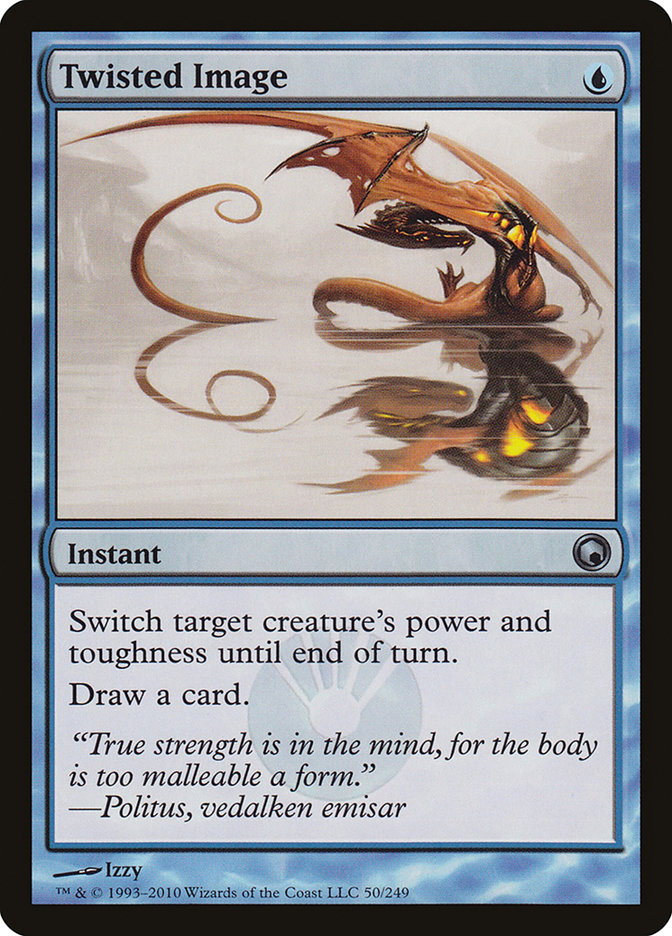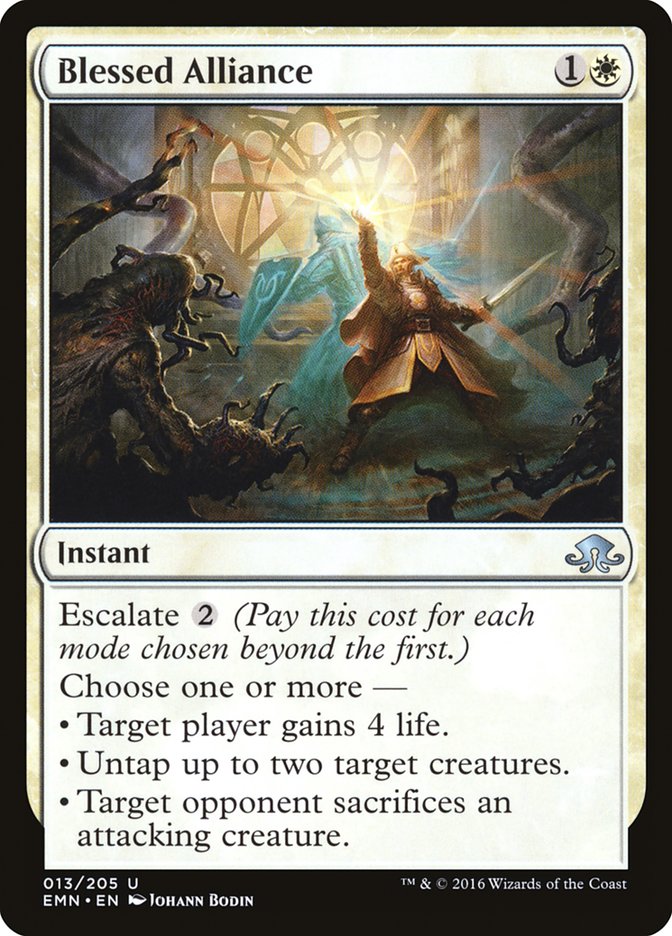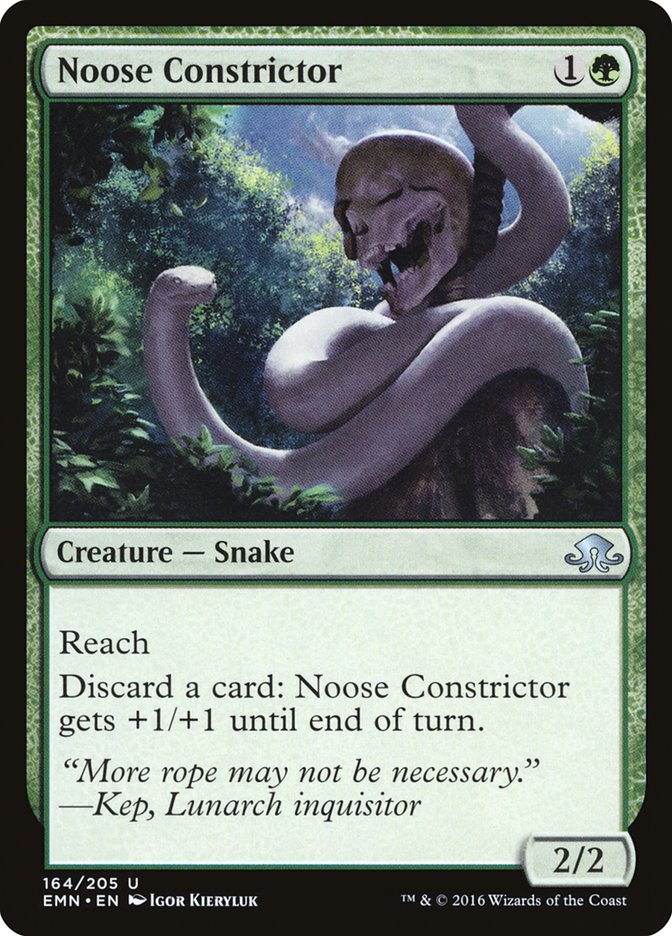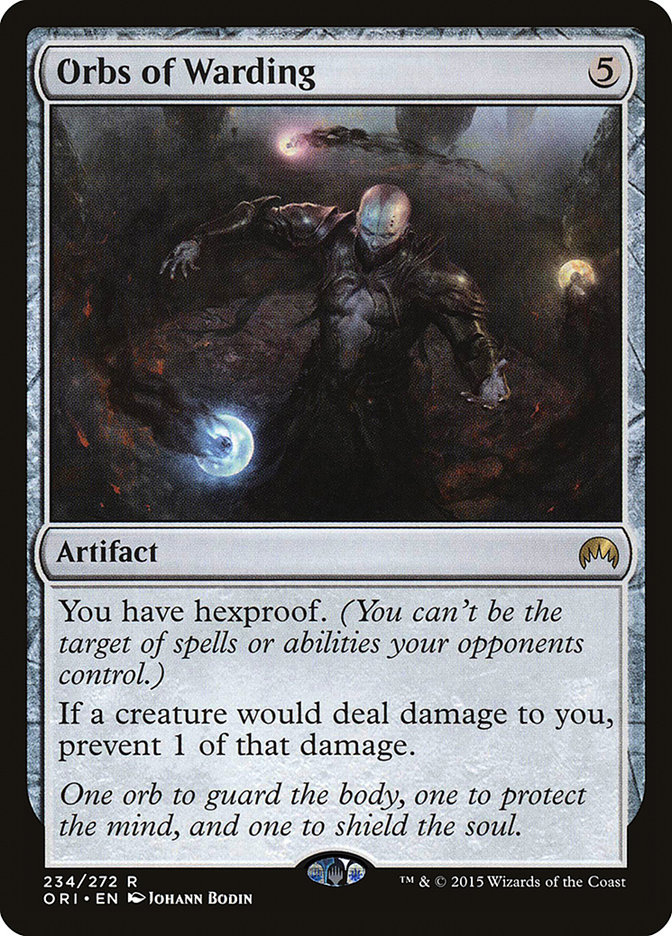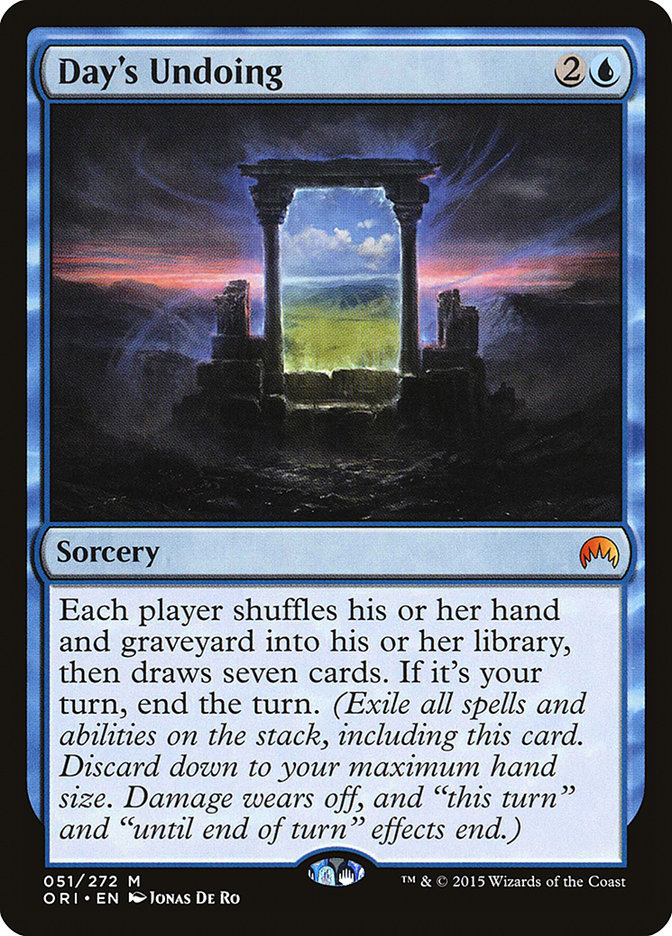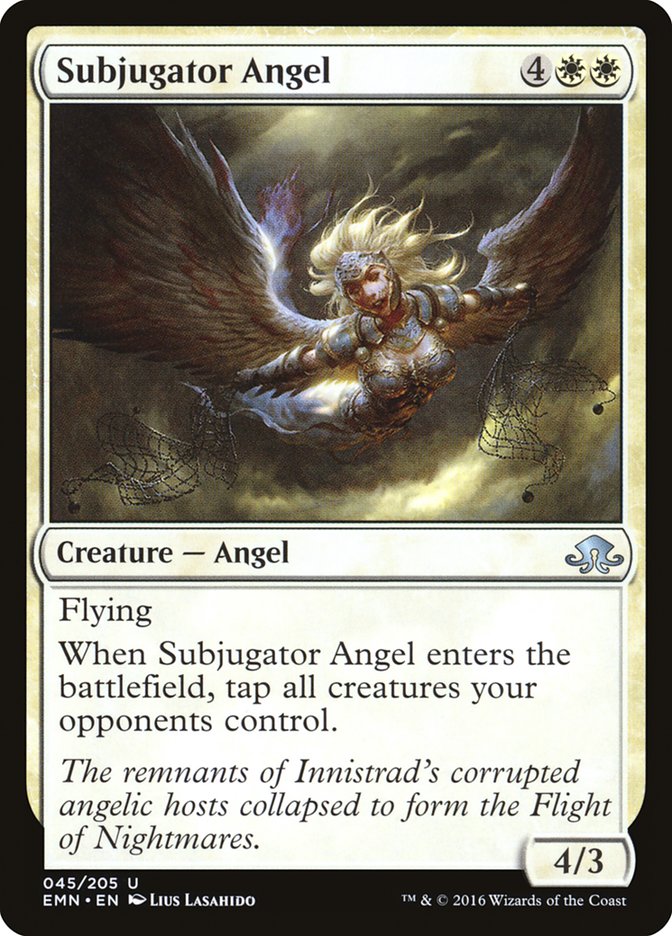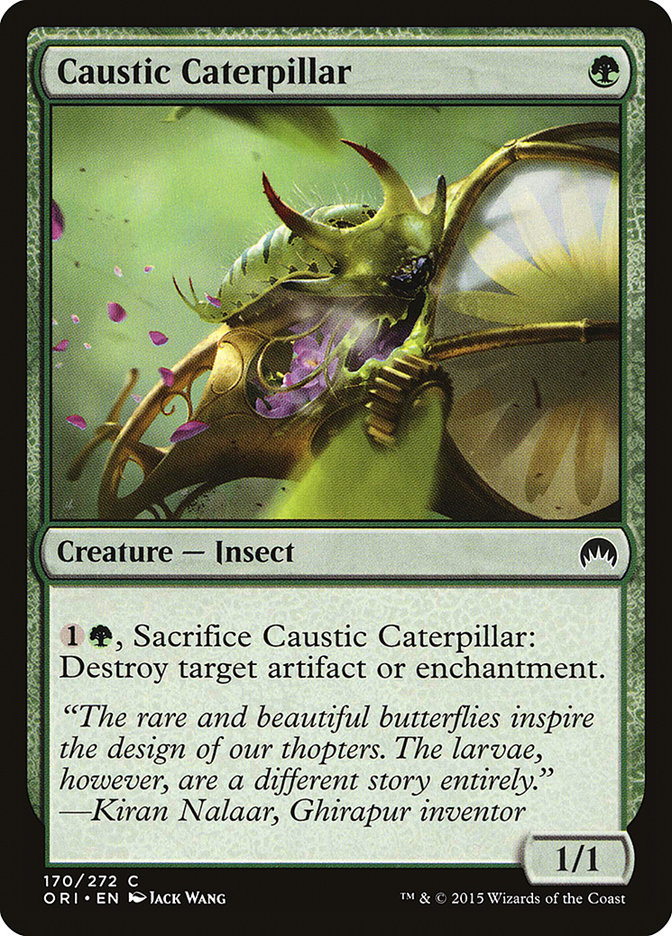As the second season of The SCG Tour® winds down, all eyes will descend on New Jersey for the Season Two Invitational for some high level Standard and Modern.
Right now the Season Two points race for the Players’ Championship is a four-horse race, and only three will make the cut. Tom Ross, Kevin Jones, Andrew Jessup, and Todd Stevens are all looking to the Season Two Invitational to lock up their spot, and one will be on the outside looking in. This makes this Invitational of special importance, as Team MGG is looking to add our second and third member to the Players’ Championship.
Thankfully I am writing this from our suite in beautiful New Jersey, where Team MGG has come two days early to prepare for this event. We’ve also invited a few friends of the team to join us for testing and are looking to do some serious damage this weekend. I want nothing more than for there to be as many bright yellow jerseys in the Players’ Championship as possible.
While figuring out what decks to play is important, almost more important is bringing the right sideboard with whatever deck you choose to play. Having the right deck means nothing if your list isn’t tuned well and you don’t have a well-considered sideboard plan for all your major matchups. Thankfully both Modern and Standard have a wealth of good sideboard options, and ones that are a bit off the beaten path can often be just the solution you are looking for.
Today I’ll look at five cards in each format that are excellent sideboard options you may have not considered.
Modern
With Ross Merriam winning #SCGNY with Dredge, all the talk has been about Rest in Peace, Grafdigger’s Cage, Leyline of the Void, and Relic of Progenitus, and how many copies one will need to play to beat the Dredge.
However, there’s an issue with that:
Dredge’s sideboard is packed full of anti-hate cards, usually in the form of artifact and enchantment destruction to get around all of the artifact- and enchantment-based hate.
One thing that Dredge isn’t great at killing is creatures, and that is where Yixlid Jailer comes in. Dredge can only kill it with Abrupt Decay or a naturally drawn Darkblast or Conflagrate, and it completely shuts down the entire deck. They can no longer dredge, can’t return creatures, and pretty much are stuck in a similar lockdown to Rest in Peace without the vunerability.
Even better, Yixlid Jailer doesn’t turn off your Tarmogoyfs or mess with your delirium, making it an excellent sideboard card for Jund and other fair black decks looking for a great anti-Dredge card.
While mostly only an option for big mana R/G decks, Fog is a fantastic choice for dealing with extremely fast aggro decks that are usually a huge problem.
Moment’s Peace was a format-defining card in Extended back in the day, and while Fog is only one half of a Moment’s Peace, sometimes all you need is half. That one extra turn you buy can be the difference between dying and casting your Primeval Titan or Wurmcoil Engine.
Not only is Fog good at just buying time, but it also actually maintains card parity when your opponent goes for some sort of pump spell, whether Become Immense out of Infect or Temur Battle Rage out of Death’s Shadow Zoo. Infect and Death’s Shadow Zoo are some of the most difficult matchups for G/R Tron and G/R Valakut, and Fog can go a long way toward making them winnable.
Twisted Image was once a fairly popular sideboard card for decks that needed to deal with Spellskite, but it has fallen out of favor lately.
This seems like a mistake.
Killing Spellskite is still a real thing, but here’s a list of popular Modern cards that Twisted Image straight-up kills:
Okay, maybe that last one only matters if Christian Calcano is playing in the event, but that’s a pretty solid list of cards. Killing any creature for one mana is great, and doing so while drawing a card is fantastic.
Most important though is that the opportunity cost of playing the card is so low. A one-mana cantrip is almost already a desirable thing in some decks, and if it’s bad, it’s not too hard to just cash it in for something else.
For decks like Infect that need good answers to cards like Spellskite and Izzet Staticaster but don’t want to dilute their deck too much, something like Twisted Image is perfect, but other decks would be wise to consider it as well.
It’s amazing how important the number four is in Modern. I’ve played a few Lightning Angels in random decks on my stream for Challenge Thursday, and it’s amazing how Lightning Angel is often just better than Mantis Rider because of all the fours it has on it.
Why is four so important?
In grindy matchups like Jund, Grixis, or Jeskai, having a resilient four-mana threat goes a very long way towards coming out on top. If your opponent casts their best discard spell and can’t take your best threat, and then they can’t answer that threat easily, you are well on your way to a match win.
Gideon, Ally of Zendikar is one of the best possible four-mana threats in the format, and any deck playing white should consider it for grindy matchups. It can create a steady stream of threats and also provide a fast clock for closing the game out quickly.
If you’re looking to come out on top of grindy fair matchups, you can’t do much better than Gideon, Ally of Zendikar.
A somewhat glossed-over card on the Eldritch Moon spoiler, Blessed Alliance is an excellent Modern sideboard card that does a fantastic job of answering troublesome matchups.
Obviously a good card against Burn decks as a lifegain and removal spell, Blessed Alliance is also fantastic against both Infect and G/W Hexproof. Both decks are traditionally very hard to interact with, with Slippery Bogle and friends being almost impossible and Infect having many protection effects like Vines of Vastwood, but Blessed Alliance gets past both of those restrictions.
Any deck playing Snapcaster Mage also gets extra utility out of having Blessed Alliance available, but if you’re concerned with beating Burn, Hexproof, or Infect, then Blessed Alliance is a great choice.
Standard
Sideboard cards are not as swingy in Standard as they are in Modern, but this does not diminish their importance relative to the format.
I couldn’t help but smile when I saw Noose Constrictor on the spoiler, as Wild Mongrel was king of Constructed Magic when I first started playing. Creatures have gotten quite a bit better since then, which means Noose Constrictor isn’t really a great maindeck card anymore, but it has an excellent place in Standard sideboards. Why?
Fevered Visions is an absolute beating against the slower Emrakul, the Promised End decks, as they just can’t empty their hands quickly enough and succumb to a flurry of burn spells.
Enter Noose Constrictor.
Noose Constrictor really is quite an elegant solution. It’s a fast two-drop that can pressure your opponent early, can become almost immune to burn spells, and can turn the extra cards from Fevered Visions into fast damage to your opponent and no damage to you.
Any slower green deck would be well served to let the noose loose if they are concerned with their U/R Thermo-Alchemist matchup.
Another card that is also good against the burn spells in U/R Thermo-Alchemist while also being good against the black-based Emrakul, the Promised End decks is Orbs of Warding. It is an expensive answer, but once it’s on the battlefield, your opponent is going to have a very difficult time killing you with either burn spells or Thermo-Alchemist. Any small creatures they may be playing will also be rendered almost useless.
Against black-based Emrakul, the Promised End decks, Orbs of Warding does two very important things: it protects you from discard effects like Transgress the Mind and Infinite Obliteration, and it protects you from Emrakul, the Promised End’s Mindslaver trigger.
You’re not going to want a ton of Orbs of Warding in your sideboard, but the first one is going to be very good in variety of situations.
We may not have Relic of Progenitus or Scavenging Ooze in Standard, but that doesn’t mean there’s no way to mess up graveyards in Standard. And you get to draw seven cards too!
Many decks in Standard are working very hard to achieve delirium, with some decks going even further for Emrakul, the Promised End. Gather the Pack, Vessel of Nascency, and Grapple with the Past do a lot of work to try to fill up the graveyard, and Day’s Undoing can undo all of that hard work and put your opponent in a spot where they must waste a lot of time refilling their graveyard. You also get to refuel your hand, which is usually going to be smaller than your opponent’s. A deck like Bant Company is usually going to be the aggressor against a delirium deck, so being able to refuel while also wrecking their graveyard is fantastic.
Day’s Undoing is a good option for any blue proactive deck against any graveyard deck.
Bant Company mirrors are not very fun and often devolve into insane battlefield stalls. Each player draws a bunch of cards and plays a million creatures until one is finally able to overcome the other.
Subjugator Angel ends all that noise and kills your opponent on the spot.
It’s narrow, but Subjugator Angel is a great option for Bant Company mirrors.
Any deck playing Liliana, the Last Hope must be looking for value creatures to rebuy, and Caustic Caterpillar is a great little one that offers excellent insurance against Fevered Visions. Most Liliana, the Last Hope decks are delirium decks that are weak to Fevered Visions, and Caustic Caterpillar gives you a nice out that is easy to find by dumping it into the graveyard. Delirium sees so much of its deck in its graveyard each game that finding even a singleton copy can change how that matchup plays out.
Caustic Caterpillar is also good against some of the fringe decks in the format, as it can kill Always Watching and other enchantments out of Humans and Pyromancer’s Goggles out of any random Goggles decks that are still around.
Finding the Gems
Very niche cards don’t often end up in maindecks, but you can find a lot of odd gems when you are looking to solve a particular problem in a certain matchup. Cards like Caustic Caterpillar or Subjugator Angel look like random Limited cards, but it’s important to be open-minded when looking for solutions.
We play over half of our games in tournaments sideboarded, and the right sideboard tools can solve almost any matchup. Figure out what problems you need to answer, and don’t be afraid to look hard for unexpected answers.


